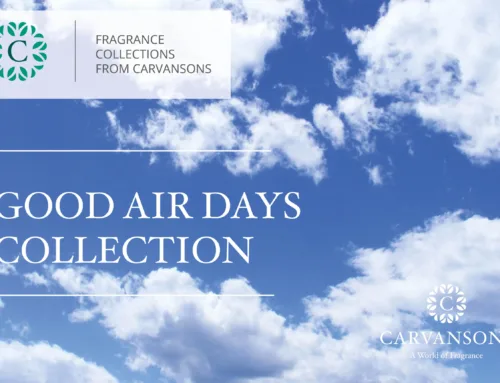Why has the number of Fragrance Allergens changed?
On 26th July 2023, the European Union (EU) adopted Regulation (EU) 2023/1545 to update labelling of fragrance allergens under Annex III to Regulation (EC) 1223/2009.
This regulation came into force on 16th August 2023. A long transition period of 3 or 5 years is given to the industry to adapt to the new requirements in response to Regulation (EU) 2023/1545. The date of the entry into force of the new regulation is 16 August 2023. However, for new restrictions a transition period is foreseen until 31 July 2026 for placing products on the market, and until 31 July 2028 for withdrawal of products from the market
What are Fragrance Allergens?
Some chemicals which are used to create fragrances are classed as allergens. These allergenic chemicals can occur from some synthetic aromatic materials but also naturally within essential oils. The allergenic chemicals have the potential to cause itching. In rare cases, they can produce more severe reactions. As a result, adhering to this guidance is absolutely paramount for product creators.
An allergenic chemical is an aroma chemical natural or synthetic which has been proven to cause an allergen reaction when used on skin application. It is important to understand in regards to allergens that although essential oils are natural, they ultimately are not safer.
What are the new 82 Fragrance Allergens?
| Allergen | New or previous |
|---|---|
| Benzyl Alcohol | Current |
| 6-Methyl Coumarin | New |
| Citral | |
| Isoeugenol | Current |
| Citronellol | Current |
| Limonene | Current |
| Pinus Mugo | New |
| Pinus Pumila | new |
| Cedrus Atlantica Oil/ Extract | New |
| Turpentine | New |
| Alpha-Terpinene | New |
| Terpinolene | New |
| Myroxylon Pereirae Oil/Extract | New |
| Rose Ketones | New |
| 3-Propylidenephthalide | New |
| Lippia Citriodora absolute | New |
| Methyl Salicylate | New |
| Acetyl Cedrene | New |
| Amyl Salicylate | New |
| Anethole | New |
| Benzaldehyde | New |
| Camphor | New |
| BetaCaryophyllene | New |
| Carvone | New |
| Dimethyl Phenethyl Acetate | New |
| Hexadecanolac tone | New |
| Hexamethylinda nopyran | New |
| Linalyl Acetate | New |
| Menthol | New |
| Trimethylcyclopentenyl Methylisopentenol | New |
| Salicylaldehyde | New |
| Amyl Cinnamal | Current |
| Cinnamyl Alcohol | Current |
| Eugenol | Current |
| Hydroxycitronellal | Current |
| Amylcinnamyl Alcohol | Current |
| Benzyl Salicylate | Current |
| Cinnamal | Current |
| Coumarin | Current |
| Geraniol | Current |
| Anise Alcohol | Current |
| Santalol | New |
| Sclareol | New |
| Terpineol | new |
| Tetramethyl acetyloctahydronaphthalenes | New |
| Trimethylbenzenepropanol | New |
| Vanillin | New |
| Cananga Odorata Oil/Extract | New |
| Cinnamomum Cassia Leaf Oil | New |
| Cinnamomum Zeylanicum Bark Oil | New |
| Citrus Aurantium Flower Oil | New |
| Citrus Aurantium Peel Oil | New |
| Citrus Aurantium Bergamia Peel Oil | New |
| Citrus Limon Peel Oil | New |
| Lemongrass Oil | New |
| Eucalyptus Globulus Oil | New |
| Jasmine Oil/Extract | New |
| Laurus Nobilis Leaf Oil | New |
| Lavandula Oil/ Extract | New |
| Mentha Piperita Oil | New |
| Mentha Viridis Leaf Oil | New |
| Narcissus Extract | New |
| Pelargonium Graveolens Flower Oil | New |
| Pogostemon Cablin Oil | New |
| Rose Flower Oil/Extract | New |
| Santalum Album Oil | New |
| Eugenyl Acetate | New |
| Geranyl Acetate | New |
| Isoeugenyl Acetate | New |
| Pinene | New |
| Benzyl Cinnamate | Current |
| Farnesol | Current |
| Linalool | Current |
| Benzyl Benzoate | Current |
| Hexyl Cinnamal | Current |
| Methyl 2-Octynoate | Current |
| Alpha-Isomethyl Ionone | Current |
| Evernia Prunastri Extract | Current |
| Evernia Furfuracea Extract | Current |
Download a printable document should you want to keep it handy.
Here is the EU document webpage which details everything, and the reporting of the new allergens.
https://eur-lex.europa.eu/legal-content/EN/TXT/?uri=celex%3A32023R1545







